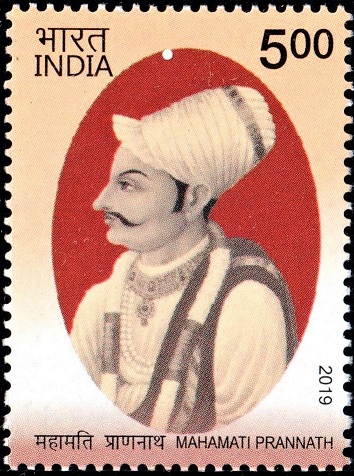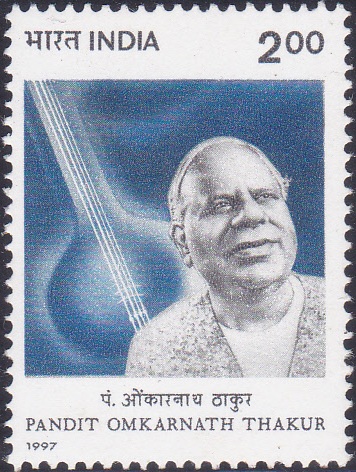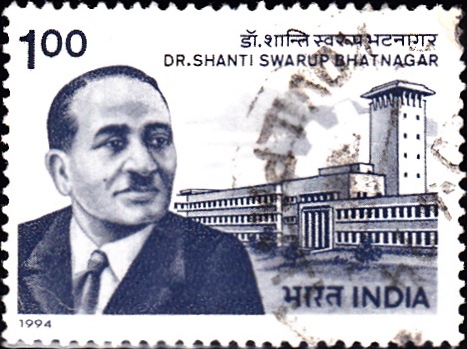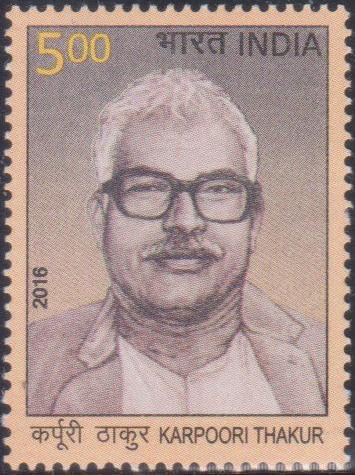
Mahamati Prannath
A commemorative postage stamp on Raj Ji Mahamati Sri Prannath Ji (Budh Nishkalank Kalki Avatar/Last Imam Mehndi), a Hindu saint from Pranami sampraday (Nijanand sampradaya) :
 Issued by India
Issued by India
Issued on Jan 25, 2019
Issued for : Department of Posts is pleased to issue a Commemorative Postage Stamp on Mahamati Prannath.
Credits :
Stamp/FDC/Brochure/Cancellation Cachet : Smt. Alka Sharma
Type : Stamp, Mint Condition
Colour : Multi Colour
Denomination : 500 Paise
Stamps Printed : 400320
Printing Process : Wet Offset
Printer : Security Printing Press, Hyderabad
Name : Mehraj Thakur
Born on Oct 26, 1618 at Jamnagar, Gujarat, India
Died on 1695
About :
- Mahamati Prannath was born on 26th October, 1618 in Jamnagar, Gujarat. His childhood name was Mehraj Thakur. His father, Keshav Thakur, was a Diwan in the state of Jamnagar. Mehraj’s mother Smt. Dhanbai, was a pious lady. He was the fourth amongst their five sons.
- At an early age, Mehraj was well versed in worldly knowledge. He was bold and aggressive and had good aptitude for spiritual knowledge. He came to listen to Shri Devchandraji’s discourses at the early age of twelve. Shri Devchandra saw in him a great visionary who was to carry on the work of awakening the souls.
- Mehraj was with his Guru for three weeks. In this period, every aspect of spiritual, political, religious and social matters, was discussed and plan for the future was drawn up. After bestowing his powers and blessings on Mehraj, Shri Devchandra left the mortal world and assigned his job of Jagni to Mehraj. Mehraj later disclosed that Lord’s consort, Shyama, working through Devchandra, had made him her instrument to perform the great task of taking the divine souls back to their abode – Paramdham.
- While fulfilling this assigned job, Mehraj – Mahamati Prannath – brought many changes into the Hindu society. While traveling throughout the country, he talked to many people in their language. That is the reason why there are six languages – Gujarati, Sindhi, Arabic, Persian, Urdu, Hindi and also words from many other prevalent languages in his works called Kuljam Swarup.
- In his task of promulgating the faith, Mahamati Prannath travelled to every corner of India and to the Arab lands: Muscat, Basra and to Bandar Abbas in Iran. In India he went to Junagarh, Thatthanagar, Naliya, Khambhaliya. In Surat, he established the holy shrine of Shri Mahamangalpuri Dham.
- Mahamati Prannath never stayed in one place for long. In spite of the difficulties of traveling, he moved around from place to place to awaken the divine souls. At that time, the Hindus were divided in the name of caste, creed, rituals etc. Exploitation of the poor, downtrodden and low castes was a common feature. Women were regarded as a low species, not allowed to remarry even if they became widows at an early age. Women were not allowed to read scriptures or to receive the sacred mantras. Sati or bride burning was in vogue. Mahamati Prannath, in his travels and discourses, tried to reform the Hindu society. He gave “Tartam Mantra” to women. Some of them became preachers and started many centers for bringing awareness into the society.
- During his travels, Mahamati met many saints and tried to unite them so that they could face the growing tyranny of the Mughal King, Aurangzeb. He attended many religious congregations like the Kumbh in Haridwar and tried to convince many Hindu saints that instead of praying to thousands of deities, we should pray to the Lord Supreme – the Adwait Brahman. In Haridwar, many saints and learned people were impressed by his philosophy. In Haridwar, in the year Samvat 1735, the great Kumbh Mela took place and there Mahamati Prannath introduced a number of people to Nijanand Sampraday. Followers of Shiva, of Shakti and of Vishnu; the Four Sects, the Dasnam, ascetics, the followers of the six philosophies; all had realized the unparalleled wisdom of Mahamati Prannath.
- In the year 1740 of the Hindu calendar, he met Maharaja Chhatrasal. Under the protection of Chhatrasal, the shrine of Padmavatipuri Dham was established and it was during his eleven years in Panna, Mahamati Prannath spoke the inspired message of the Tartam Vani or Kuljam Swarup, the sacred book which is the essence of all sacred books. The Kuljam Swarup contains fourteen books in 18758 verses which were compiled by his followers, as they were spoken by the Lord. Thus the Kuljam Swarup is the most authentic scripture of the world to Pranamis. Most of the books of Kuljam Swarup are in Hindi – Hindustani, in Devnagri script.
- He emphasized the oneness of the Muslim and Hindu faiths and established a universal religion – a religion for all mankind and called it “Nijanand Dharma” or the blissful religion for the souls.
- In the year 1751 of the Hindu calendar, on the fourth day of the dark half of Shravan, the fifth month, Mahamati Prannath completed his purpose in this world and prepared to reside in the Highest Abode, “Paramdham”. He passed down to Maharaja Chhatrasal the task of awakening the souls.
- Besides India, the followers of Mahamati Prannath are spread over many countries, namely – Nepal, Bhutan, USA, Canada, UK, Australia, Singapore etc. Their number exceeds five million and about six hundred centres are continuously engaged in extending their services in the field of education, social service, medical facilities, other welfare activities and spiritual awakening programmes.
- Text : Based on the information received from proponent.
Subscribe
Login
0 Comments







